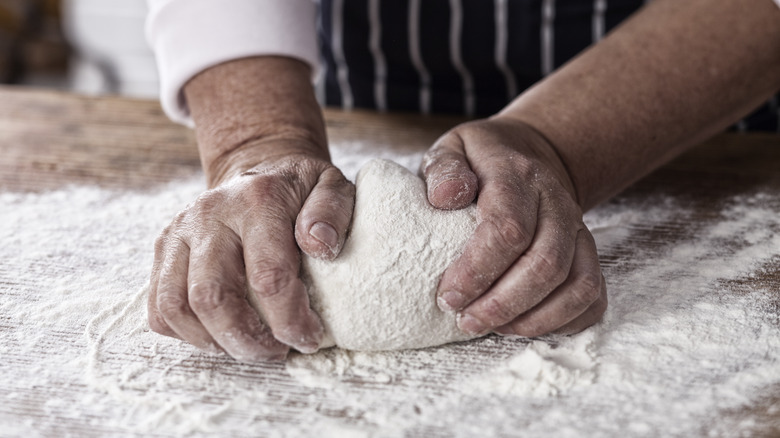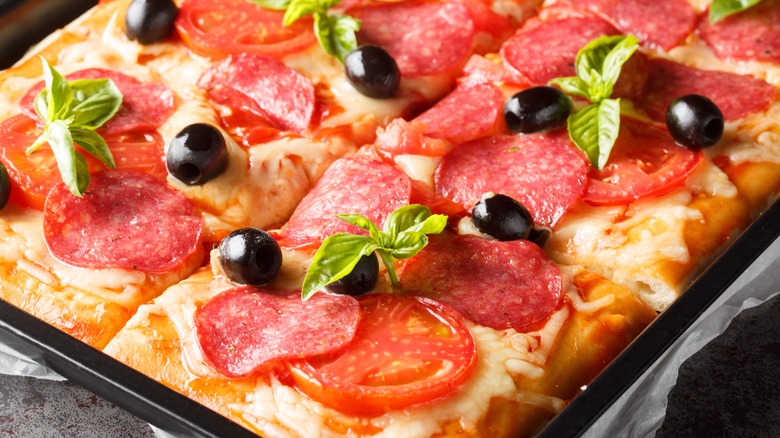The Roman-Style Technique For Perfectly Stretched Pizza Dough
We may receive a commission on purchases made from links.
Did you know it's not all pizza pies in the skies when it comes to tossing and stretching dough? Yes, it takes one part skill and one part acrobatic magic, but there are actually different techniques for different styles of pizza. We talked to Andrea Congiusta, executive chef at Pasta Beach, to find out more about the Roman style of stretching dough, which is Chef Congiusta's favorite.
"The concept is to gently press down the dough ball starting in the center and work your way outwards," Congiusta explains. "Repeat this motion until you achieve the right thickness." Roman-style pizza is known for its light and crispy crust, which means you'll want to keep gently working your way outwards until the dough is about ¼ of an inch. The reason this technique works for Roman-style pizza is that it prioritizes stretching gently and slowly so you're able to get that delicately thin dough without ripping it.
What is Roman-style Pizza?
"Pizza al taglio," as Roman-style pizza is known in Italy, directly translates to "pizza by the cut." And when Romans say "by the cut" they mean literally, pizza al taglio is cut with special food shears called a pizza scizzas — like this Dreamfarm Scizza — a spring-loaded type of scissor with a flat base and a sharp blade for easy divvying. It doesn't take a culinary expert to figure out that Roman-style pizza was initially conceived in Rome, sometime in the early-to-mid 19th century. Before Roman-style pizza exploded in popularity outside of Rome, pizza al taglio was largely an on-the-go meal served to the working class.
Pizza al taglio differs from other styles of pizzas because it's cooked in a pan and the dough is made with a little splash of olive oil which makes it more pliable and easier to stretch into that thin pie. Unlike traditional Italian pizzas that rely on mozzarella and tomato sauce, Roman-style pizza uses a variety of toppings including thinly sliced meats, vegetables, and even goat cheese — whatever ups the calorie count for someone who needs a lot of energy in a little time. Once the pizza is done cooking in its wood-fired oven, which helps develop those deliciously complex roasted flavors, it's cut into even rectangles or squares in the pan for ease of transport straight into your mouth.

